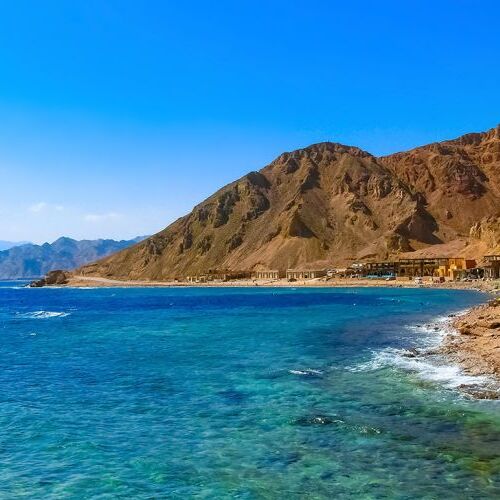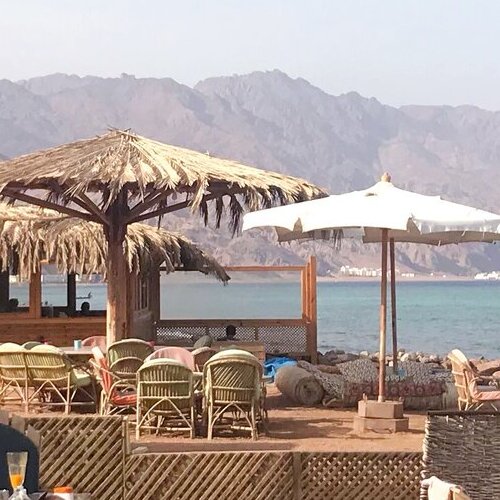Experiences
Dahab's Dive into Adventure: Exploring Aquatic Marvels and Desert Wonders
In the coastal haven of Dahab, adventure beckons from every corner, and nature unveils her captivating secrets in the most enchanting way. Let’s embark on a journey through the major activities that make Dahab a haven for seekers of thrill and serenity alike.
1. Beneath the Azure Veil: Snorkeling and Diving
Dahab’s azure waters cradle a vibrant underwater world, making it a sanctuary for snorkeling and diving enthusiasts. Whether you’re a seasoned diver or a curious beginner, Dahab caters to all. Dive centers along the beach offer top-notch aquamarine equipment for rent, with certified instructors ready to guide novices into the mesmerizing depths.
2. The Blue Hole: An Aquatic Abyss
Venture on a safari from Dahab, and within a mere 30 minutes, you’ll arrive at the iconic Blue Hole, one of Egypt’s and the world’s premier diving destinations. Imagine a colossal underwater pit, with an entrance spanning 56 meters and expanding to a breathtaking 120 meters at its base. What sets this site apart is its direct connection to the open ocean, allowing divers and snorkelers to encounter exotic marine species and mesmerizing sea creatures while navigating the cerulean waters.
On the shore, rustic huts and cafes offer sustenance and refreshments for tourists and divers. Here, you can also rent scuba diving gear, snorkeling equipment, and other aquamarine essentials. But remember, don your gear only after you’ve reached the sign that reads “Safe Entrance.”
Diving into the Blue Hole’s depths, at 260 feet, reveals a thriving ecosystem teeming with diverse marine life, from playful clownfish to graceful grey reef sharks.
3. The Bells: A Luminous Underwater Gem
Not far from the Blue Hole lies another gem, The Bells, often mistaken for its grand neighbor. Perched atop the Blue Hole, it marks the convergence of a deep chasm and a vibrant reef. Sunlight pierces the surface, illuminating the seabed and casting a spellbinding glow on the soft corals. Divers here are treated to a sensory symphony of colors and aquatic wonders.
4. Canyon: Earth’s Underwater Fissure
A mere 10-minute journey from Dahab, en route to Israel, unveils Canyon, a remarkable dive site steeped in lore. According to Sinai legend, a seismic tremor in the Gulf of Aqaba carved this underwater marvel. The fissure plunges to depths of around 30 meters, offering divers captivating underwater vistas.
5. Camel Diving Safaris: A Nomadic Aquatic Odyssey
For a truly unique adventure, embark on a Camel Diving Safari. Travel to additional dive sites like The Hutts, Abu Helal, and Eel Garden while perched atop a camel’s back. This novel experience not only provides an opportunity to explore Dahab’s aquatic treasures but also enables interactions with the locals, offering insights into the region’s history and fascinating monuments.
6. The Lagoona: Where Windsurfers Soar
The Lagoona, a vast expanse of golden beach, welcomes windsurfers to glide and soar amidst the Sinai Mountains. It’s a playground for those who seek the thrill of the wind and waves.
7. Ein Khudra: The Green Oasis of Serenity
The name “Ein Khudra” translates to “green oasis,” and this site lives up to its name. It boasts a resplendent white canyon that leads to a breathtaking oasis. Historically significant as a resting point for pilgrims journeying between St. Catherine and Jerusalem, Ein Khudra offers a tranquil respite amid nature’s wonders.
8. Desert Safaris: Four-Wheel Adventures
For those craving desert escapades, Dahab offers four-wheel-drive safaris with stopovers at Jebel El Tih, Jebel Serbi, and Serabit El Khadem. These excursions unveil the raw, timeless beauty of the Sinai Peninsula.
In Dahab, adventure knows no bounds, and nature’s wonders unfold with every step. Whether you choose to explore the depths of the sea, traverse majestic canyons, or embark on desert odysseys, Dahab promises an unforgettable journey, where every moment is an invitation to discover the treasures of Egypt’s coastal gem.
A stele made during the rule of king Amenhotep I was the first piece of inscription discovered at Qasr Ibrim. The stele is currently in London at the British Museum having been found in the crypt of a Christian Cathedral and its date of creation is estimated to be the eighth year of Amenhotep’s rule.
Apart from the fact that its location is quite desirable for security and physical reasons, Qasr Ibrim also had some religious significance during and after the reign of the Pharaohs. Four shrines, built during the new kingdom by local administrators, are etched into the body of the cliffs in the direction of Aniba (formerly known as Miam, the ancient capital of the region). These shrines were dedicated to the goddess Hathor (whom people in the region considered the goddess of safety and success on voyages), Horus, and the deities of the First Cataract. The shrines eventually had to be relocated due to the risk posed by Lake Nasser’s rising waters.
One of the shrines- the one built by Usersatet, the governor of Kush under Amenhotep II- was rebuilt at the New Nubian Museum in Aswan after being removed from its previous location. There has, yet, not been the rebuilding of any of the other shrines, although new Sabua is being touted as a possible location for the erection of these shrines.
New Kalabsha has also played host to a Stele of Seti I which has been reconstructed at the southern end of the region’s major Ptolemaic temple. At both sides of the plateau of Qasr Ibrim were archaic tombs which have been unfortunately destroyed by the deluge of water from Lake Nasser. Of the surviving religious structures on the site, the earliest is a temple built during the rule of King Tahargo. After the attacks by the Nubians, Qasr Ibrim went through a period of prosperity and affluence during which many temples were constructed while repairs were carried out on King Tahrago’s temple. People with various ailments thronged the temples to seek healing due to the reputation of the temples as places where diseases were cured.
Due to its resilience against invading religions, Qasr Ibrim continued to be a centre of worshipping the traditional Egyptian gods despite the proliferation of Christianity in the surrounding Roman Empire.
Despite the decree to close down the ‘pagan temples’ by Theodosius I (Roman emperor) in 390 AD, the Nubians at Qasr Ibrim stayed adamant and continued to worship in the temples located there. Eventually, they had to capitulate and the Temple of Isis in Qasr Ibrim was demolished while King Tahargo’s temple was converted into a Church for Christians. Another cathedral in honour of the Virgin Mary was erected at Qasr Ibrim in the 7th century using bricks from the ancient temples.
Thus, the area was converted into a Christian region with its own diocese, attracting pilgrims from all over the world who tried to leave a mark of their presence by making impressions of their feet on the site.
The complete tomb of Bishop Timotheos, interred in Qasr Ibrim at the tail end of the 14th century, was found unaltered in the northern crypt of the Virgin Mary Cathedral. Alongside his body were also found his appointment letter written by the Patriarch of Alexandria in 1372 AD.
At the time, Christian burials were done without much ceremony or formalities, the body would simply be covered in a blanket and lowered in a stone-covered grave. However, burials of clergymen were done differently in a more elaborate manner. Bishop Timotheos’ body was found dressed in his official robes as well as the sacred iron cross and some other personal effects. All of these artefacts, discovered in Qasr Ibrim have now been domiciled at the British Museum in London as well as a page from the biblical book of Revelation in the native Nubian tongue and inscribed with Coptic letters.
In accordance with the resistance of Qasr Ibrim to invading religions, Christianity again survived for a long time in the region even when Muslim invaders had promulgated Islam all over the rest of Egypt. It took the conquest of Egypt by the Ottoman Turks and the creation of an outpost of Bosnian mercenaries in the 16th century before Islam successfully replaced Christianity in Qasr Ibrim.
Updated On March 16, 2020



